Key Takeaways
-
Stink Bugs: Plant-feeding insects that are harmless to humans but can damage crops and gardens. Recognizable by their shield-shaped bodies and unpleasant odor when disturbed.
-
Kissing Bugs: Blood-feeding insects that pose a serious health risk due to their ability to transmit Chagas disease. Commonly found in dark, hidden areas around the home.
-
Identification Differences: Stink bugs have a blunt head and shield-like shape, while kissing bugs feature a narrow, cone-shaped head and elongated, oval body with red, yellow, or tan markings.
-
Prevention and Control: Seal entry points around doors, windows, and plumbing. Eliminate outdoor hiding spots like debris and firewood. For kissing bugs, seek professional pest control due to health risks.
-
Health Risks: Stink bugs are mainly a nuisance, but kissing bugs can transmit Chagas disease—a serious illness if untreated. Take preventive measures to protect your family.
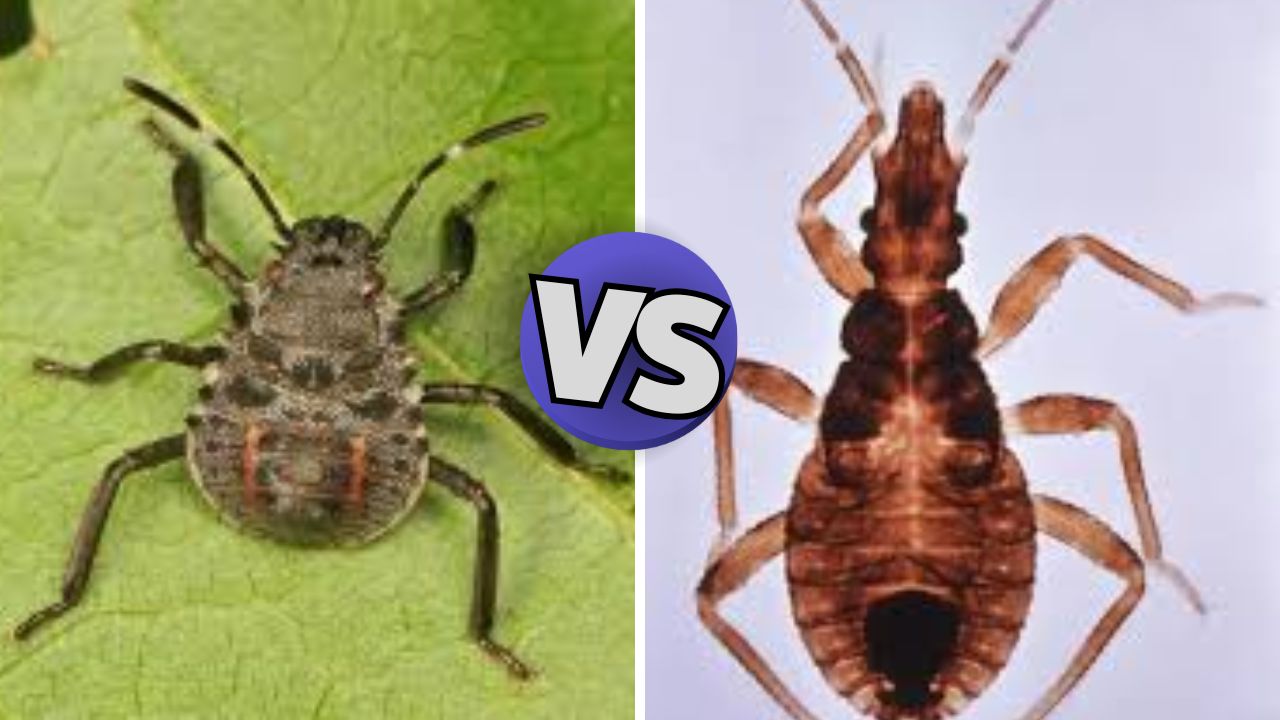 So, you have seen a mysterious bug in your house. Is this a smell bug? Or can it be a kiss bug? Maybe you have seen these creatures crawling across your windows or hiding behind a picture frame, and you are thinking, “What’s in the world?” Well, you are not alone. These two insects often confuse people because let’s face it-plans have “I-Don-Don-Laleong-Har” vibe. But here is the case: while smelly insects and kissing insects look somewhat similar, they cannot be very different about their habits, risks and how to handle them.
Let us break the major differences, because, believe in me, you want to know with whom you are working with – especially if stakes are your health.
So, you have seen a mysterious bug in your house. Is this a smell bug? Or can it be a kiss bug? Maybe you have seen these creatures crawling across your windows or hiding behind a picture frame, and you are thinking, “What’s in the world?” Well, you are not alone. These two insects often confuse people because let’s face it-plans have “I-Don-Don-Laleong-Har” vibe. But here is the case: while smelly insects and kissing insects look somewhat similar, they cannot be very different about their habits, risks and how to handle them.
Let us break the major differences, because, believe in me, you want to know with whom you are working with – especially if stakes are your health.
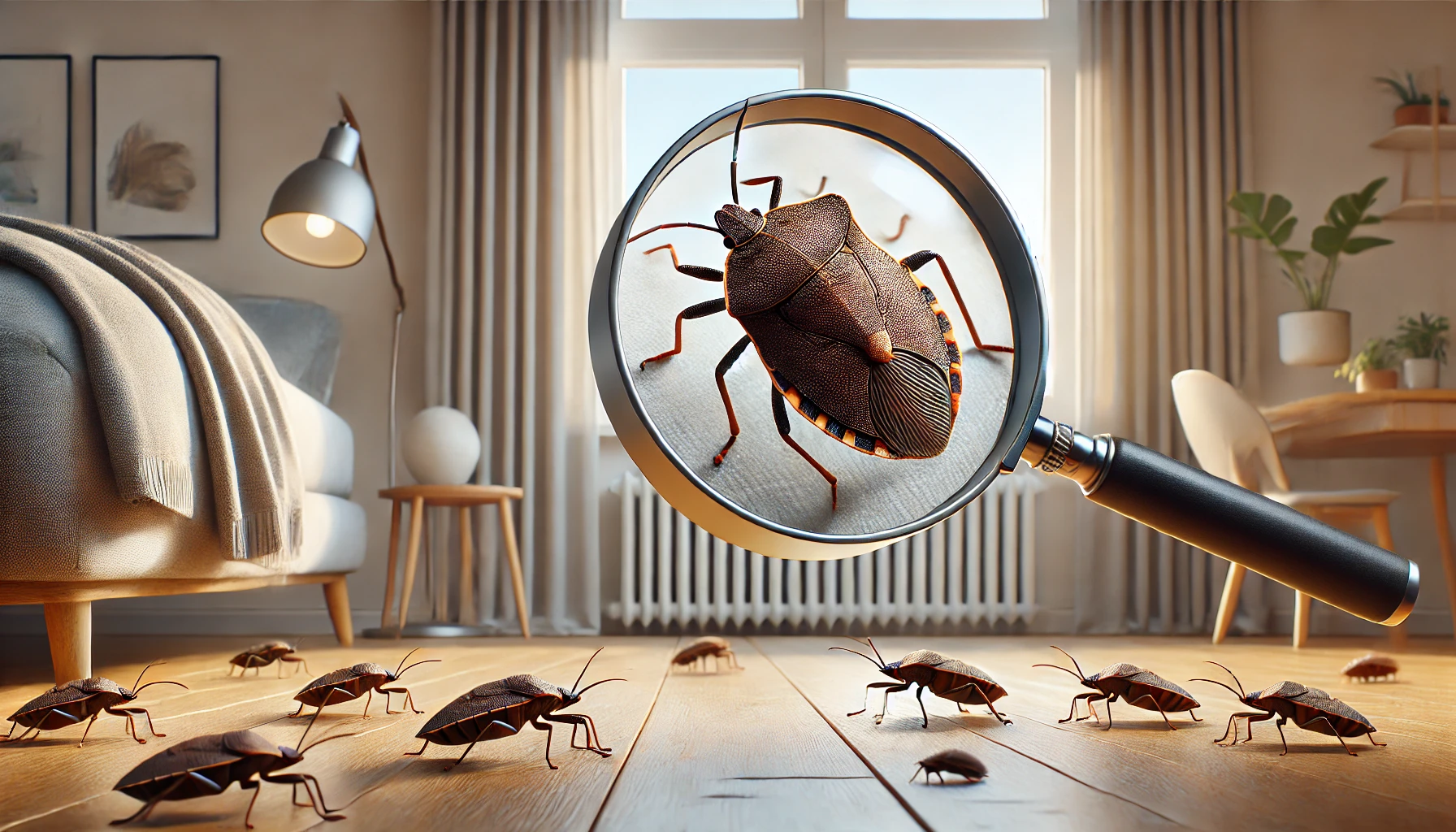

Not getting a solution?
Get your free pest control estimate today!Stink Bugs: The Unwanted Houseguests
Why Do They Smell? First off, let’s talk about that smell. If you’ve ever crushed a stink bug, you probably know exactly what I’m talking about. That unpleasant, pungent odour is their defence mechanism—they spray it out to ward off predators. It’s like their stink bomb, and, honestly, it’s enough to make you want to move them out of your house ASAP.Physical Characteristics of Stink Bugs
-
Size and Shape: Typically 1/2 to 5/8 inches long, stink bugs have a distinct shield-shaped body resembling a flat, wide triangle.
-
Coloration: Usually brown, gray, or green with some mottled patterns that help them blend into natural surroundings.
-
Wings: Their wings overlap in a triangular formation when at rest, resembling the fold of a paper airplane when in flight.
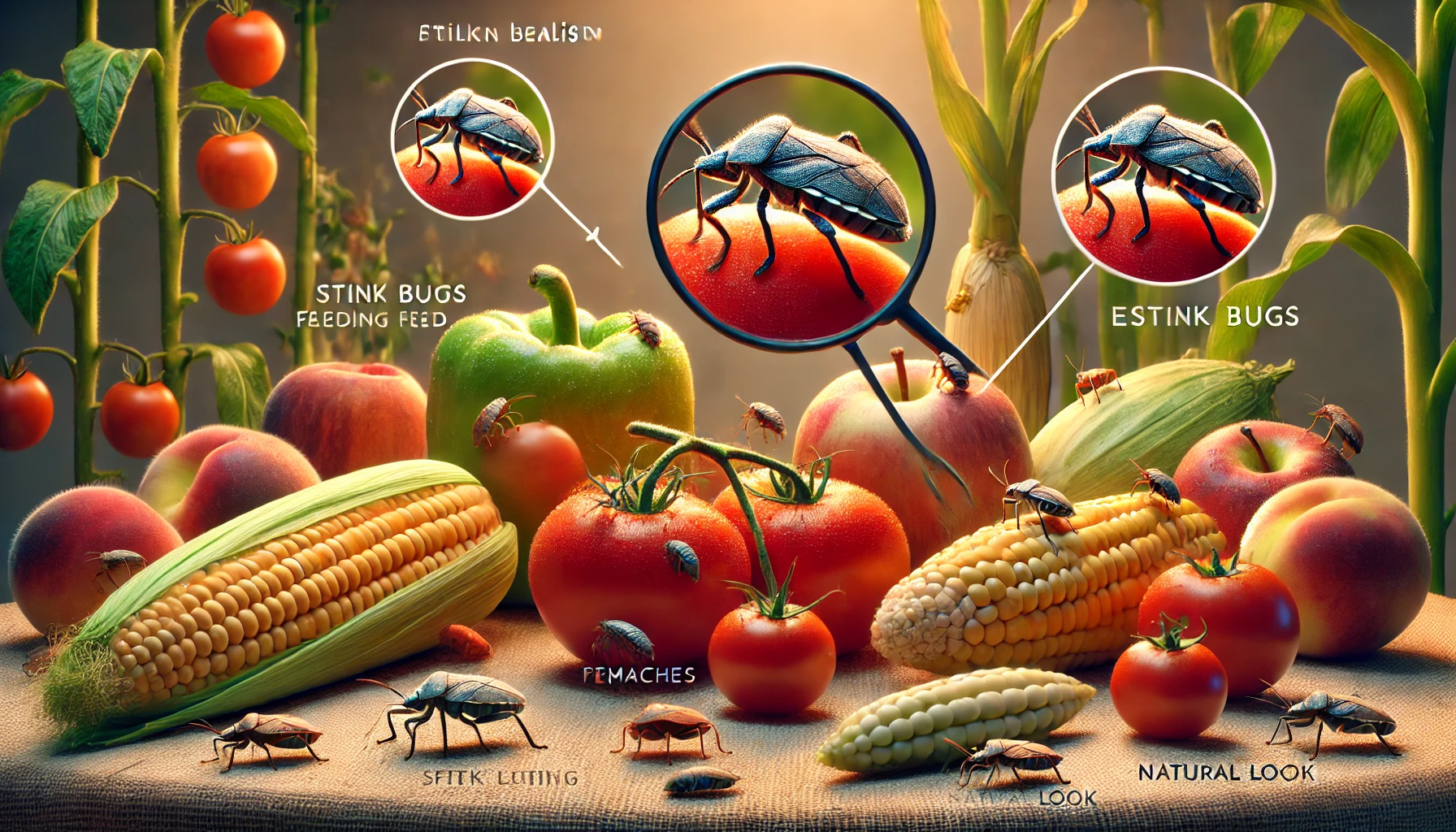 What Do They Eat?
Stink bugs are all about plants. They’re not interested in your blood like other pests—thankfully! These guys suck the juices out of fruits, vegetables, and ornamental plants, which can be a real headache for farmers (and gardeners). If you’ve got a small vegetable garden or houseplants, be aware that stink bugs might start munching away.
Where Do They Live?
In the warmer months of the year, you’ll find stink bugs hanging out in gardens, orchards, and fields. But once the temperature drops, they start on a hunt looking for shelter. And what is better than your warm, cozy home? They slip through cracks in your windows, doors, and even under eaves. If you see them hanging out near a sunny window, that’s their thing—they love sunlight!
What Do They Eat?
Stink bugs are all about plants. They’re not interested in your blood like other pests—thankfully! These guys suck the juices out of fruits, vegetables, and ornamental plants, which can be a real headache for farmers (and gardeners). If you’ve got a small vegetable garden or houseplants, be aware that stink bugs might start munching away.
Where Do They Live?
In the warmer months of the year, you’ll find stink bugs hanging out in gardens, orchards, and fields. But once the temperature drops, they start on a hunt looking for shelter. And what is better than your warm, cozy home? They slip through cracks in your windows, doors, and even under eaves. If you see them hanging out near a sunny window, that’s their thing—they love sunlight!
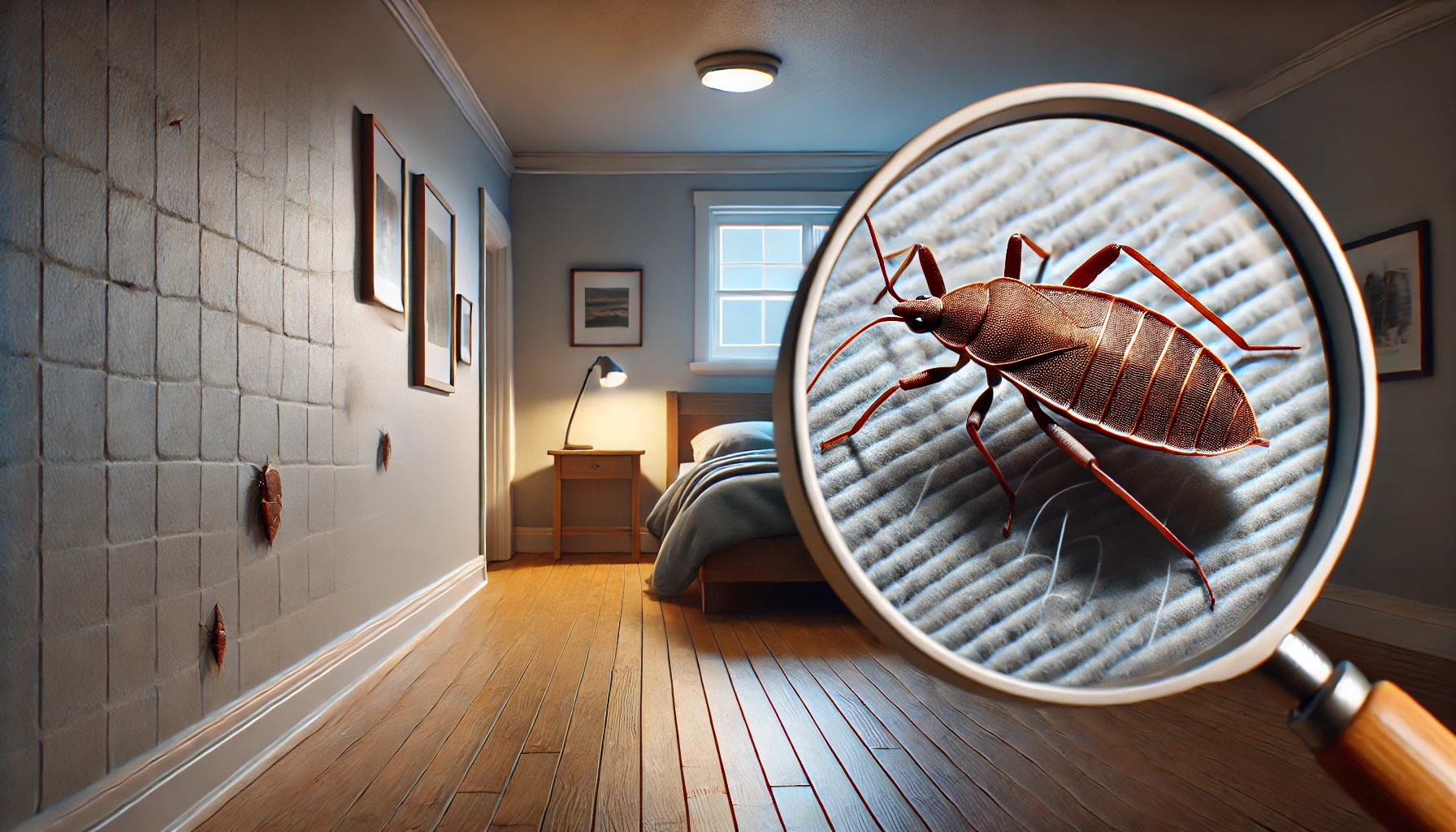
Kissing Bugs: Not the Kind of Kiss You Want
Now, let’s talk about kissing bugs. I know—sounds like something out of a sci-fi horror movie, right? But these bugs are a genuine concern, mainly because they can transmit a potentially dangerous disease called Chagas disease.Physical Characteristics of Kissing Bugs
-
Shape and Size: Kissing bugs measure between 1/2 inch to 1 inch long and have an oval-shaped, narrow body that resembles a football.
-
Coloration: They are dark brown or black with striking red, yellow, or tan markings along the edges, acting like a built-in warning label.
-
Wings: Kissing bug wings have a reddish or orange tint and fold flat when resting, similar to stink bugs but with more vivid coloration.
 Health Risks: Chagas Disease
You know how people are always asking you to look out for mosquitoes in summer? Well, kissing bugs should also be in the list, as they can spread the tripanosoma cruzzi, which is a parasite responsible for the Chhagas disease. If a kiss bug bugs you and defecate near the wound, the parasitic can enter your body through mucous membrane or open wounds. And let’s clear – Chaga disease can lead to severe heart and digestive problems if not treated.
Habitat of Kissing Bugs
While stink bugs are pretty social, kissing bugs are more secretive. They love dark, hidden places, like woodpiles, animal burrows, and cracks in your walls. They won’t be hanging out on your windowsill like stink bugs. Instead, you’ll find them in less disturbed areas of your home—attics, basements, or behind walls.
Health Risks: Chagas Disease
You know how people are always asking you to look out for mosquitoes in summer? Well, kissing bugs should also be in the list, as they can spread the tripanosoma cruzzi, which is a parasite responsible for the Chhagas disease. If a kiss bug bugs you and defecate near the wound, the parasitic can enter your body through mucous membrane or open wounds. And let’s clear – Chaga disease can lead to severe heart and digestive problems if not treated.
Habitat of Kissing Bugs
While stink bugs are pretty social, kissing bugs are more secretive. They love dark, hidden places, like woodpiles, animal burrows, and cracks in your walls. They won’t be hanging out on your windowsill like stink bugs. Instead, you’ll find them in less disturbed areas of your home—attics, basements, or behind walls.
Key Differences Between Stink Bugs and Kissing Bugs
| Feature | Stink Bugs | Kissing Bugs |
|---|---|---|
| Shape | Shield-shaped | Oval-shaped |
| Size | 1/2 to 5/8 inches | 1/2 to 1 inch |
| Color | Brown, gray, green, mottled | Brown, black with red or yellow markings |
| Head | Blunt | Narrow, cone-shaped |
| Feeding Habit | Plant juices | Blood feeding (nocturnal) |
| Health Risk | None (nuisance pest) | Can transmit Chagas disease |
| Habitat | Gardens, homes (winter shelter) | Woodpiles, animal burrows, homes (dark areas) |
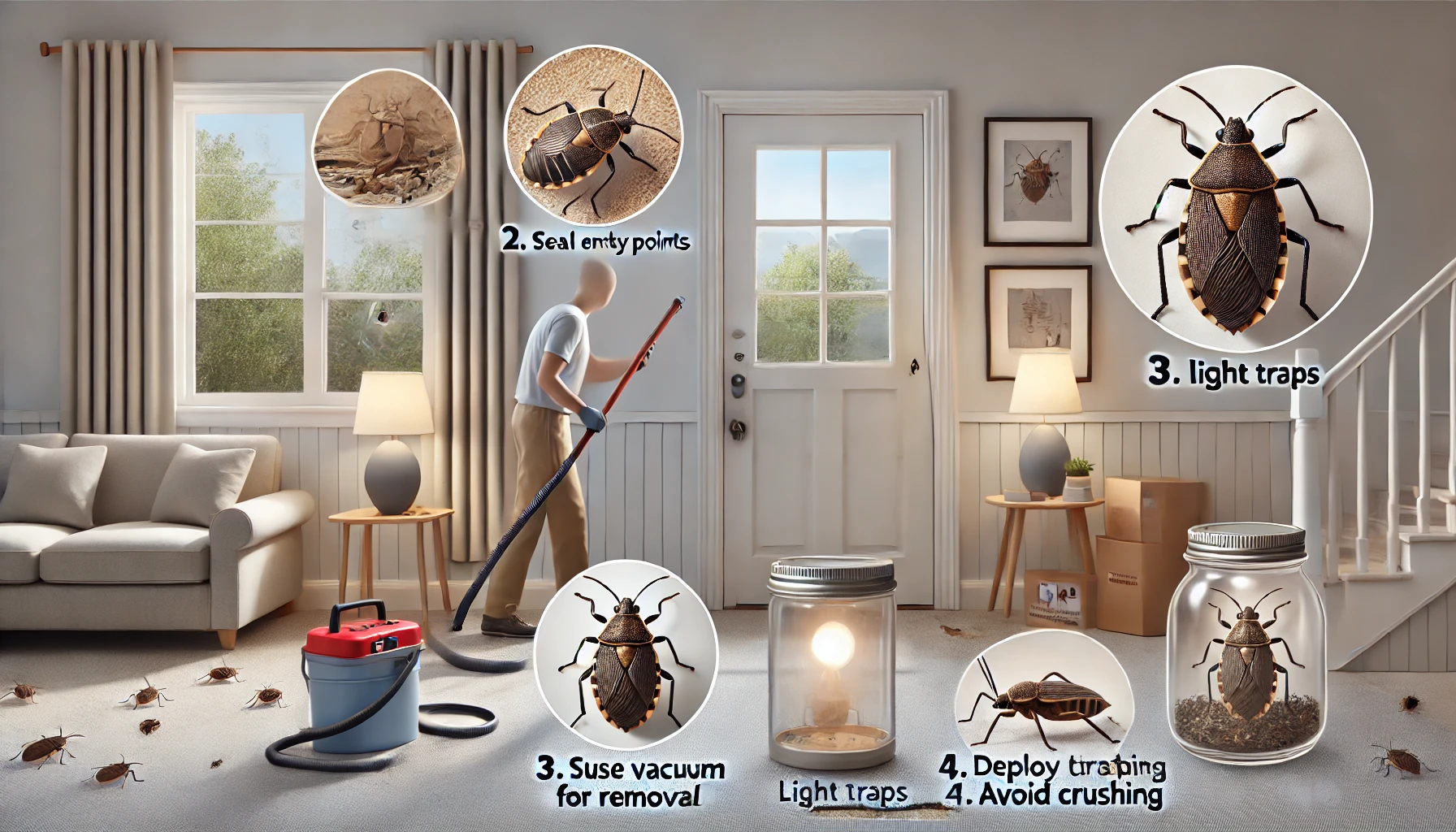
How to Deal with Stink Bugs
- Let me tell you, if stink bugs start showing up in your home, they’re a pain to deal with. But don’t panic—there are ways to kick them out.
-
Seal Entry Points: Use caulking, weather stripping, or screens to block cracks and gaps around windows, doors, and vents to keep stink bugs from getting in.
-
Lighting: Switch to yellow-toned outdoor lighting and minimize indoor light at night to reduce attraction near windows and doors.
-
Clean Up: Keep your yard tidy—clear out dead leaves, trim plants, and store firewood away from your home to eliminate outdoor hiding spots.
-
Vacuuming: Use a vacuum cleaner to remove stink bugs indoors instead of crushing them. Dispose of vacuum contents outside to avoid the lingering odor.
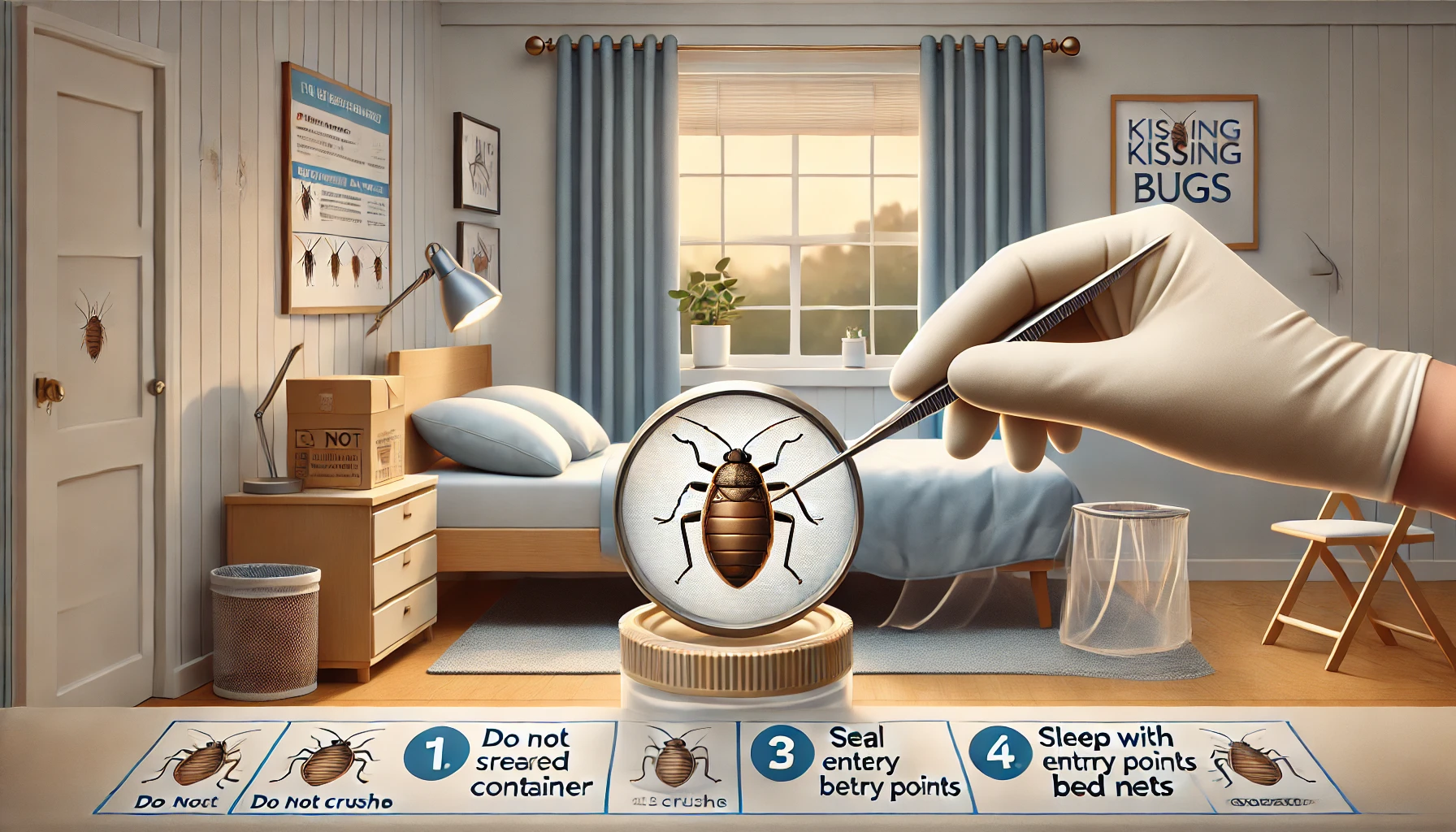
How to Handle Kissing Bugs
- Now, kissing bugs are a whole different ballgame. If you find one of these in your home, especially in areas where your family sleeps, it’s time to take action.
-
Seal Cracks: Seal all gaps around windows, doors, baseboards, and utility lines to prevent kissing bugs from sneaking in.
-
Clear Hiding Spots: Declutter indoor and outdoor areas, especially dark corners, woodpiles, and basements where kissing bugs hide.
-
Nighttime Precautions: Use protective netting and screened windows in sleeping areas, especially in regions where kissing bugs are common.
-
Professional Help: Contact pest control if you suspect kissing bugs in your home. Experts can safely identify and remove them while addressing the risk of disease.
Visit our Species, Control, and DIY Guide sections for additional resources on bug and ways to tackle a bug infestation.





